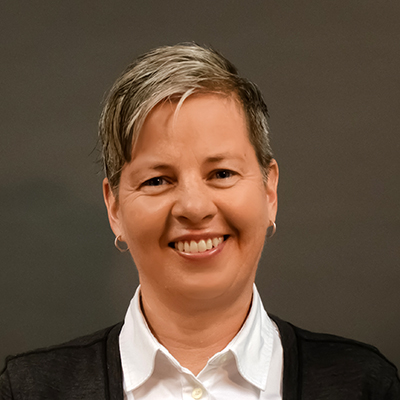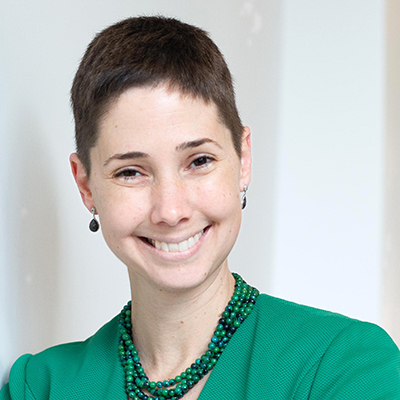
Lightspring/Shutterstock
.
The current global pandemic and associated economic crisis is shining a spotlight on the stresses and resiliency of families and some of the fundamental flaws in the U.S. child welfare system. Many of these have been obvious to child welfare leaders and professionals for decades but change doesn’t come easy to this reactive, antiquated system.
Now, as we struggle through circumstances and challenges of unprecedented proportions, our systems and leaders must be nimble and creative in ensuring that children and families have the resources, services and supports they need.

Jennifer Jones
We have an opportunity as we wade through uncharted territory together to create a new child and family well-being system for the 21st century that is preventative, proactive and works to keep families strong before harm occurs.
Traditionally, our nation has put a significant amount of unrealistic expectations on child protection agencies. We wrongly assume that they prevent and mitigate child abuse and neglect and address the conditions and context in which families live, such as poverty, violence and discrimination.
What we need is a new child and family well-being system that, while inclusive of child protection agencies, is built on the foundation of prevention and earlier intervention, with many community partners who share responsibility to support families so that all children thrive.

Amy Templeman
As we create this new child and family well-being system, it is essential that we promote and support natural and community supports and invest heavily in a diverse array of prevention programs and services that can keep families strong and stable in the first place. Yes, we will always need the child protection agency to respond when children are believed to be abused or neglected but it is one component in a new vision of our nation’s child and family well-being system.
When Susan Dreyfus, president and CEO of the Alliance for Strong Families and Communities served as a commissioner for the federal Commission to Eliminate Child Abuse and Neglect Fatalities, she coined the term 21st-century child welfare system. Since then Casey Family Programs and hundreds of other child welfare leaders across the country have been working diligently to identify what this system should look like. She envisioned a reformed system that is science-aligned, takes a public health approach and is focused on keeping children safely in their own homes with services and supports.
In fact, the Family First Prevention Services Act moves us in that direction by placing an emphasis on prevention, early intervention and evidence-based practices for children and families. This groundbreaking legislation allows us to rethink the policies, practices and systems of yesterday and reshape our nation’s child welfare system.
What we need
There are a number of core features we believe are essential to this reformed 21st-century child welfare system:
- Takes a public health approach that shifts us from a protection focus to a prevention focus and pays specific attention to the social determinants of health. We know that our health is determined in part by access to social and economic opportunities, the resources and supports available in our homes, neighborhoods and communities. There is a broader ecosystem of inter-related players and a larger shared responsibility for the well-being of our children, including teachers, pediatricians and others who work with children and families.
- Incorporates meaningful and intentional ways to include those with lived experiences in decisions about policy and practice, such as birth parents, relative caregivers, foster parents and youth in foster care.
- Aligns with the latest advances in neurosciences. Over the past two decades, we have seen an explosion of new knowledge, research and evidence on how the brain develops, and how toxic stress can alter the brain’s architecture. We should make sure that all parents, caregivers and people who work with children are educated on brain science and healthy child development.
- Ensures that at its core, the system is making use of evidence and generating knowledge to inform regulations, fiscal decisions, and service development and delivery. The system should prioritize investments in innovation to identify new interventions and evaluate those, so we continue to build the evidence base and quickly scale up those strategies that show promise.
- Uses predictive data analytics, in responsible and ethical ways, to identify a community’s strengths where child maltreatment and related injuries and fatalities are likely to occur.
- Addresses disproportionality in all aspects of the system, which will require addressing systemic inequities across our society, including poverty and mass incarceration.
- Professionalizes treatment foster care by providing salaries and benefits for caregivers who take care of children in foster care who have significant needs and require substantial treatment. These individuals would be educated in the science and impact of trauma and work in close partnership with the birth family.
- Leverages technology and information sharing to better engage and support children, birth families and resource families. Through COVID-19 we have made exceptions and provided flexibility to child protection agencies in order to continue to provide services to families. We should continue to include these options in our ways of supporting families.
Our local, state and federal policies, regulations and funding mechanisms will need to align with any changes in the system. We know that’s possible because we have experienced that flexibility and witnessed changes over the past several months to respond to this public health crisis. This period of disruptive change gives us both momentum and a mandate to pursue our vision of a 21st-century child and family well-being system that realigns toward prevention and better serves the needs of all families.
Jennifer Jones is director of the Change in Mind Institute at the Alliance for Strong Families and Communities.
Amy Templeman is director of the Within Our Reach Office at the Alliance for Strong Families and Communities.


























